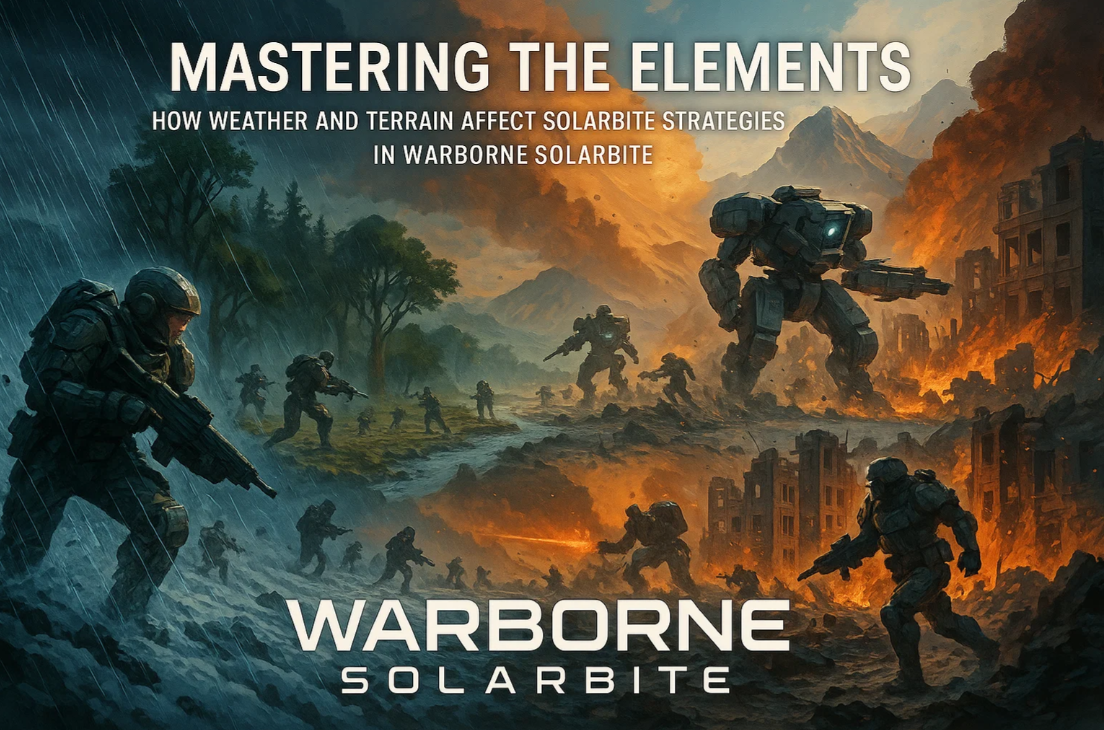
Mastering the Elements: How Weather and Terrain Affect Solarbite Strategies in Warborne Solarbite
- Zoky
- 0
- Posted on
In Warborne Solarbite, battles aren’t just determined by the size of your army or the power of your units. Instead, the environment itself—shifting weather patterns and varied terrain—plays a crucial role in shaping the outcome of every skirmish. Players who learn to read the battlefield and adapt their tactics accordingly gain a decisive edge over their opponents. Below, we’ll break down the most important ways weather and terrain influence gameplay and how you can turn these conditions to your advantage.
Mastering the art of adapting to shifting weather and diverse terrain is what sets great commanders apart in Warborne Solarbite. Every storm, mountain pass, or hidden forest path adds layers of tactical depth that reward flexible strategies and sharp decision-making. If you’re ready to test your skills against both the elements and rival commanders, now is the perfect time to buy Warborne Solarbite and experience the battlefield in its most dynamic form.
Weather Effects: More Than Just Visuals
The dynamic weather system in Warborne Solarbite is more than atmospheric decoration. Each condition changes the flow of combat, forcing commanders to rethink their strategies.
Clear Skies – The Baseline
On sunny, clear days, visibility is high, movement is unrestricted, and ranged units operate at full efficiency. This is the “default” condition where tactics depend entirely on player skill and positioning, without environmental interference.
Rainstorms – Reduced Accuracy and Morale
Rain lowers visibility and reduces the accuracy of ranged attacks. Units reliant on precision fire—such as snipers or artillery—become less effective. Meanwhile, melee-oriented squads often thrive, as the rain closes engagement distances. Commanders should use this opportunity to push forward with shock troops while the enemy’s ranged support is hindered.
Snow and Blizzard Conditions – Slowing the Battlefield
Snow-covered maps decrease movement speed across most terrain, creating choke points and attrition-heavy battles. Blizzards amplify this effect, severely limiting vision. Cavalry units lose mobility, but heavily armored infantry gain relevance since speed is less important. Deploying defensive strategies and fortifying positions becomes key.
Sandstorms – Chaos in the Desert
In desert environments, sandstorms disrupt targeting systems, obscure vision, and may even damage lightly armored units. This favors ambush tactics and close-quarter engagements. Units with stealth abilities or natural resistance to environmental hazards shine here.
Terrain Factors: Controlling the Battlefield
Beyond weather, terrain is equally impactful in Warborne Solarbite. Every map is layered with obstacles, elevation shifts, and environmental hazards that affect unit performance.
Plains – Balanced Ground
Open plains favor mobility and ranged combat. Units with high movement speed can outmaneuver slower foes, while artillery can set up devastating firing lanes. However, the lack of cover makes careless advances extremely risky.
Forests – Cover and Concealment
Forests provide natural protection, reducing ranged damage and increasing the chance of ambush. Stealth units can slip through trees unseen, making forests perfect for guerrilla tactics. However, mechanized units often suffer penalties when navigating thick terrain.
Mountains and High Ground – Tactical Superiority
Holding the high ground grants clear advantages: increased attack range, higher defense, and better line of sight. However, climbing or moving through mountainous terrain is slow, leaving units vulnerable during repositioning. Smart players secure these areas early to control the flow of the battle.
Rivers and Wetlands – Natural Barriers
Water slows movement and can separate units from reinforcements. Bridges and fords become high-value choke points. Light infantry and amphibious units excel here, while heavily armored forces risk becoming bogged down.
Urban Zones – Close-Quarters Carnage
In ruined cities and industrial zones, long-range weapons lose effectiveness as buildings block line of sight. Infantry units dominate in narrow corridors, and explosive weaponry gains additional power by collapsing structures. Strategic use of cover and corner control is essential.
Combining Weather and Terrain for Tactical Depth
Where Warborne Solarbite truly shines is in how weather and terrain interact. For example:
- Rain in Forests: Ranged units suffer doubly from accuracy penalties and obstructed vision, making ambushes devastating.
- Snow in Mountains: Movement becomes painfully slow, rewarding defensive plays and artillery setups.
- Sandstorms in Urban Areas: Line of sight is almost nonexistent, turning battles into chaotic melee clashes.
Commanders who anticipate these combinations and adapt in real time will dominate the battlefield.
Strategic Tips for Competitive Players
- Scout Constantly – Weather shifts mid-battle. Use fast or stealthy units to monitor the map and adjust your plans.
- Diversify Your Army – Don’t rely solely on ranged or melee units. A balanced force adapts better to unexpected conditions.
- Exploit Timing – Launch offensives when conditions favor your army’s composition. For example, rush melee troops during a storm.
- Master Map Knowledge – Learn which terrain zones are decisive and plan to control them early.
- Adapt Equipment Loadouts – Some units can carry gear that reduces environmental penalties—use this to gain the upper hand.
Final Thoughts
The unpredictable interplay of weather and terrain ensures no two battles in Warborne Solarbite are ever the same. Victory doesn’t go to the strongest force, but to the most adaptable commander. By studying environmental effects, anticipating shifts, and tailoring your strategy, you’ll gain the upper hand in even the harshest conditions.